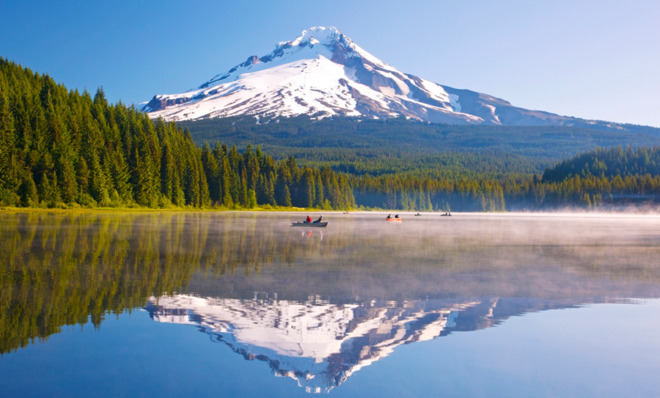How cold peanut butter could help us predict volcanic eruptions
Researchers in Oregon and California have upended popular beliefs about how and why volcanoes erupt


There are lots of interesting things about volcanoes, but for people who live within striking distance, there's only one big question: When will the volcano blow? In Nature this week, two volcanologists purport to be closer to the answer — at least for most volcanoes.
Adam Kent, a geologist at Oregon State University, and Kari Cooper, a U.C. Davis geochemist, studied Oregon's Mount Hood in the hopes of discovering the age of a reservoir of magma standing two to three miles below the volcano's surface. They found that fact — roughly 20,000 to 100,000 years old — but also something more surprising: The pool of magma under Mount Hood isn't very molten at all.
"If the temperature of the rock is too cold, the magma is like peanut butter in a refrigerator," Kent says. "It just isn't very mobile. For Mount Hood, the threshold seems to be about 750 degrees centigrade (1,400 degrees F). If it warms up just 50 to 75 degrees above that, it greatly increases the viscosity of the magma and makes it easier to mobilize."
The Week
Escape your echo chamber. Get the facts behind the news, plus analysis from multiple perspectives.

Sign up for The Week's Free Newsletters
From our morning news briefing to a weekly Good News Newsletter, get the best of The Week delivered directly to your inbox.
From our morning news briefing to a weekly Good News Newsletter, get the best of The Week delivered directly to your inbox.
Most of the time, Mount Hood's magma has been below the 750-degree point. In the periods where it rose above that threshold, like 220 years ago and 1,500 years ago, Mount Hood erupted. That strongly suggests that scientists can get closer to predicting when a volcano will erupt by looking at when the peanut butter melts, a process that can take as little as two months.
Luckily, "modern technology should be able to detect when magma is beginning to liquefy, or mobilize," Kent says, "and that may give us warning of a potential eruption. Monitoring gases, utilizing seismic waves, and studying ground deformation through GPS are a few of the techniques that could tell us that things are warming."
The other fortunate thing — at least for the residents of Portland, 50 miles west of Mount Hood, and other cities in northern Oregon — is that when this particular volcano erupts, it hasn't been very dramatic. Imagine a tube of peanut butter. When it gets to room temperature, if you squeeze it in the middle, that's what passes for a Mount Hood eruption. "A big glob kind of plops out the top," Kent says, "but in the case of Mount Hood, it doesn't blow the mountain to pieces."
Not every volcano is like Mount Hood — on Pacific islands like Hawaii, for instance, the reservoir of magma under the volcanoes probably is liquid most of the time — but Cooper and Kent say that preliminary evidence suggests that most active volcanoes have peanut butter–like magma beneath the surface. Cooper explains:
A free daily email with the biggest news stories of the day – and the best features from TheWeek.com
At best, this is just a piece of the puzzle. But if Cooper and Kent, or other scientists, can narrow down the window of volcanic eruptions to a few months, or even a few years, a lot of people will sleep better at night.
Peter has worked as a news and culture writer and editor at The Week since the site's launch in 2008. He covers politics, world affairs, religion and cultural currents. His journalism career began as a copy editor at a financial newswire and has included editorial positions at The New York Times Magazine, Facts on File, and Oregon State University.
-
 Crossword: December 30, 2025
Crossword: December 30, 2025The daily crossword from The Week
-
 What have Trump’s Mar-a-Lago summits achieved?
What have Trump’s Mar-a-Lago summits achieved?Today’s big question Zelenskyy and Netanyahu meet the president in his Palm Beach ‘Winter White House’
-
 The most anticipated movies of 2026
The most anticipated movies of 2026The Week Recommends If the trailers are anything to go by, film buffs are in for a treat
